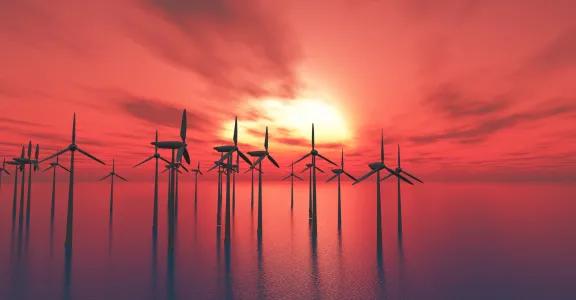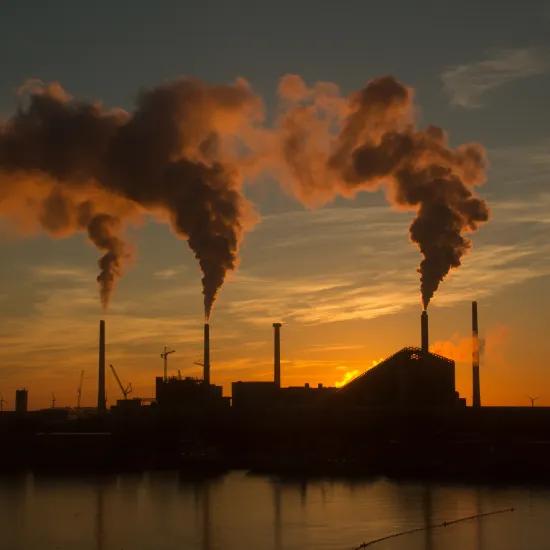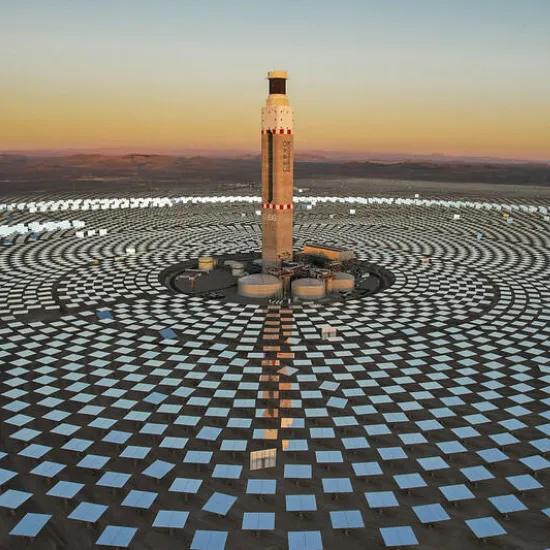Hydropneumatic storage system delivers power when needed
Dutch startup FLASC has developed a system to store excess electricity from offshore wind farms onsite. That way, the parks can provide power even when the wind is not blowing.
The Hydro Pneumatic Energy Storage (HPES) system makes it possible to store large amounts of electricity at offshore wind farms, instead of in large batteries on land, making these farms more efficient and profitable and the supply of wind energy more constant.
Hydropneumatic system
The development responds to the fact that wind energy should be used when it is available: the system stores energy at the wind farm, where it is generated, ensuring that power can be supplied as needed. The storage system employs hydraulic pumps, pressure vessels, turbines, compressed air, and seawater to create a comprehensive plug-and-play solution. When the wind farm generates excess power, either beyond immediate demand or more than the grid can accommodate, a hydraulic pump on a floating platform forces air and seawater into a steel tank located on the seabed, which acts as a pressure vessel. Consequently, the pressure inside this tank increases to 200 bar, allowing the power to be stored as hydraulic energy. When there is no wind or only a light breeze, the pressure in the tank decreases, allowing seawater and compressed air to drive a turbine that generates electricity. This enables the wind farm to continue providing power even during calm conditions. Approximately 75% of the electricity stored in the system is recoverable.
The storage tank, functioning as a battery, can be situated at depths ranging from 40 to 400 meters, making it ideal for shallow seas like the North Sea. The design of the system is compact and modular, meaning it can be scaled up to store more power based on its size. FLASC estimates that the system can store 10 MW of power for durations between 4 to 12 hours. Adjustments in capacity are possible by varying the number of units installed at the wind farm. A wind farm with 100 turbines would need about eight to ten of these units.
Offshore wind energy storage
This storage method could prove more cost-effective than onshore battery storage, utilising the existing space at wind farms efficiently. Additionally, this capability allows wind farm owners to store power and sell it at higher prices when demand increases.
Several companies are exploring offshore wind energy storage solutions. For instance, the Scottish company Verlume stores surplus energy in undersea lithium-ion batteries, while the Dutch company Ocean Grazer aims to store energy in high-pressure water reservoirs beneath the seabed, a technology somewhat similar but less advanced than FLASC's.
The cost-effectiveness of underwater storage compared to onshore battery farms remains uncertain. Despite these innovations, offshore wind farms still connect to onshore grids, where developers can also establish large-scale battery parks using lithium or other technologies. The future will tell!
Not or insufficiently initiated into offshore wind energy?
On 6 September 2024, we are organising the Masterclass '(Offshore) wind energy basics and state of the art for starting professionals', especially for newly graduated engineers and (starting) professionals with insufficient knowledge about this sector and technology. In this '1-day ramp-up course', we provide a helicopter view, zooming in on some specific aspects of a wind turbine (offshore), the focal points and critical components in the development and operational phase, the basics and we take a look at the state of the art, latest innovations and market trends in the industry. Want to join in? Sign up today!




